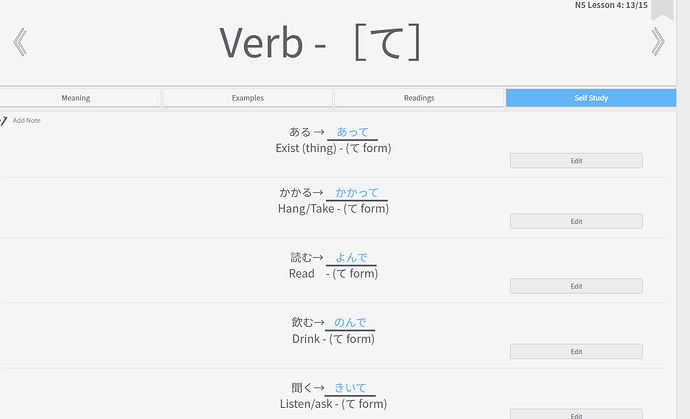Hey folks! Apologies if this post seems all over the place. I kinda feel like I just don’t understand Bunpro.
I’m new to the forums, and fairly new to Bunpro. I’ve dabbled with few grammar points over a long period of time. After reading the FAQ, skimming the forums, and spending some time just using Bunpro, I can’t help but to wonder a few things;
I’m following the Tae Kim path, and I’m often finding frustration with the way things are introduced differently in the Tae Kim guide versus Bunpro. For example, Tae Kim might introduce る-verbs, but only teach casual non-past forms. Then you go to Bunpro, and it quizzes you on casual, polite, past, non-past, etc… and none of the readings seem to offer guidance on everything it’s testing you on.
Are we expected to just fail these? Or is the Tae Kim path just not a very fluid one? Should I be doing most of my research outside of Bunpro’s suggestions so as to learn what they’re testing me on?
I’m totally open to suggestions, others’ experiences, being told I’m just not paying attention, or whatever else. I really like Bunpro and want to understand how to use it best.
Thank you!


 ) is that if you don’t HAVE to follow a certain book that you should try and stick to the bunpro pathway. Bu the beauty of BunPro is that you can try a few different methods and see what works for you, so you could start of on the BunPro path until you feel like just adding random grammar points you encounter in the wild, or you can switch to a pathway in the middle of your studies, or you can just fill in the grammar points that you missed with the main pathway to complete a book, … The options are pretty close to limitless
) is that if you don’t HAVE to follow a certain book that you should try and stick to the bunpro pathway. Bu the beauty of BunPro is that you can try a few different methods and see what works for you, so you could start of on the BunPro path until you feel like just adding random grammar points you encounter in the wild, or you can switch to a pathway in the middle of your studies, or you can just fill in the grammar points that you missed with the main pathway to complete a book, … The options are pretty close to limitless 

